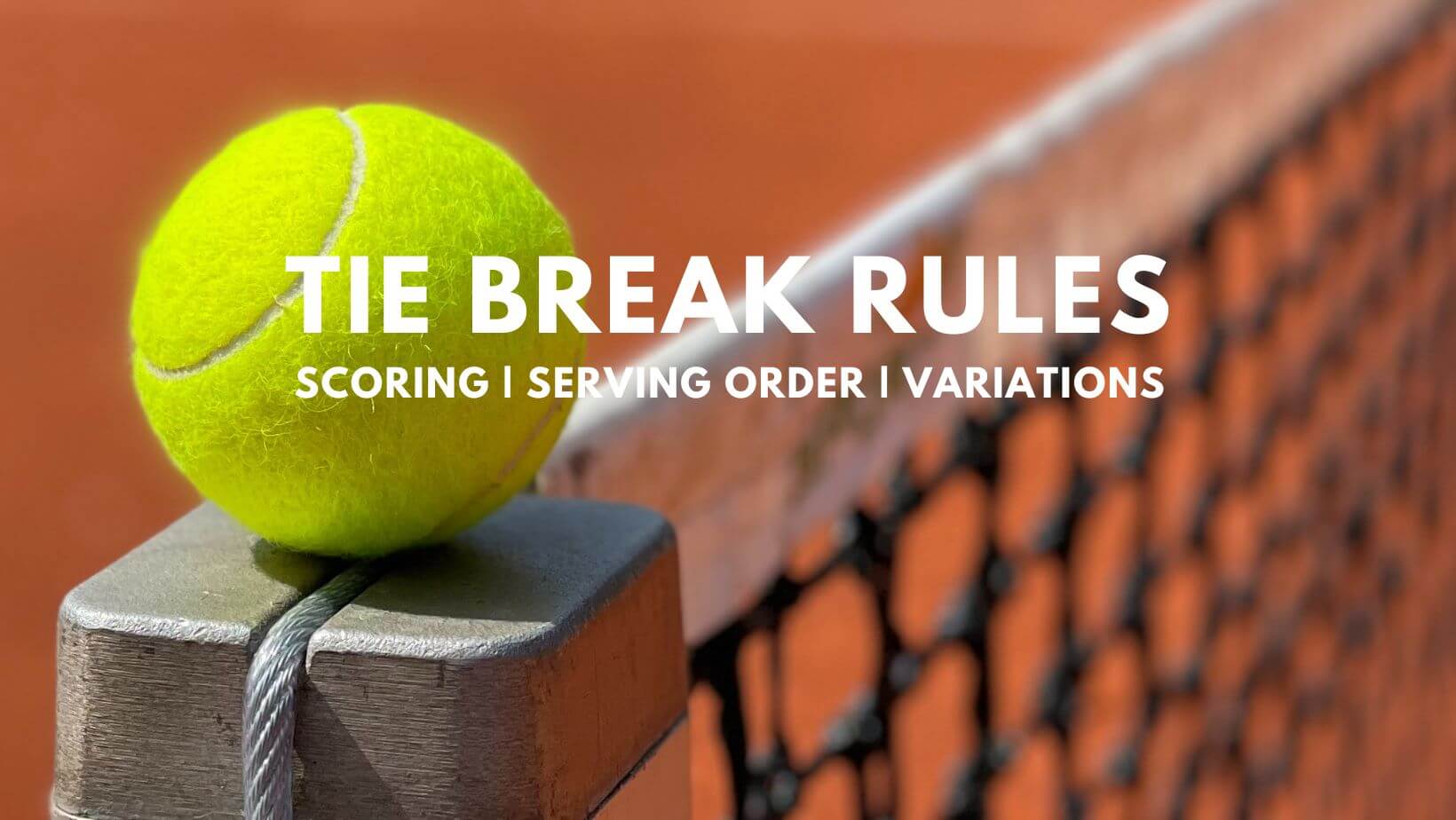Strategic Considerations in Tiebreaks

Tennis tiebreak rules – Tiebreaks, also known as tiebreakers, are a crucial aspect of tennis matches. They provide a thrilling and often decisive way to determine the winner when the score is tied at 6-6 in a set. Players employ various strategies to gain an advantage in tiebreaks, considering factors such as serving order, opponent’s strengths and weaknesses, and the overall score.
Serving First vs. Second, Tennis tiebreak rules
Serving first in a tiebreak offers a slight advantage, as the server has the initiative and can put pressure on the returner. The server can aim for specific areas of the court, force the returner to hit deep shots, and potentially earn an early mini-break. However, serving second also has its benefits. The returner can observe the server’s patterns, anticipate their shots, and capitalize on any weaknesses in their serve.
Adjusting Tactics
Players must adjust their tactics based on the score and their opponent’s strengths and weaknesses. If a player is leading in the tiebreak, they may adopt a more conservative approach, focusing on making consistent shots and avoiding unforced errors. Conversely, if a player is trailing, they may need to take more risks, such as hitting more aggressive shots or serving wider to the corners.
Historical Evolution of Tiebreaks: Tennis Tiebreak Rules

Tiebreaks have become an integral part of tennis, but their origins and evolution are less well-known.
The first known use of a tiebreak was in 1965 at the Newport Casino Invitational in Rhode Island. The tournament director, James Van Alen, introduced a tiebreak to resolve matches that reached 8-8 in the deciding set. The tiebreak was played as a 12-point game, with the first player to reach 7 points winning the match.
The tiebreak quickly gained popularity and was adopted by other tournaments, including Wimbledon in 1971 and the US Open in 1973. However, the scoring system and serving sequence of the tiebreak have changed over time.
In 1970, the tiebreak was shortened to 9 points, with the first player to reach 5 points winning the match. In 1975, the serving sequence was changed from alternating serves to a system where one player serves two consecutive points and then the other player serves two consecutive points.
The tiebreak has had a significant impact on the game of tennis. It has made matches more exciting and unpredictable, and it has given players a way to break out of long, drawn-out sets. The tiebreak has also changed the overall strategy of the game, as players now need to be prepared to win tiebreaks in order to win matches.
The Impact of Tiebreaks on the Game of Tennis
Tiebreaks have had a significant impact on the game of tennis. They have made matches more exciting and unpredictable, and they have given players a way to break out of long, drawn-out sets. The tiebreak has also changed the overall strategy of the game, as players now need to be prepared to win tiebreaks in order to win matches.
Some of the specific ways that tiebreaks have impacted the game of tennis include:
- Tiebreaks have made matches more exciting and unpredictable. In the past, matches could often end in long, drawn-out sets that were difficult to win. Tiebreaks provide a way to break out of these sets and give players a chance to win the match quickly.
- Tiebreaks have given players a way to break out of long, drawn-out sets. In the past, matches could often end in long, drawn-out sets that were difficult to win. Tiebreaks provide a way to break out of these sets and give players a chance to win the match quickly.
- Tiebreaks have changed the overall strategy of the game. In the past, players could afford to play conservatively and wait for their opponent to make a mistake. However, tiebreaks require players to be more aggressive and take risks in order to win. This has changed the overall strategy of the game and made it more exciting to watch.
Tennis tiebreak rules are designed to provide a fair and exciting conclusion to a close set. Similar to the relentless pursuit of justice by Robert F. Kennedy Jr. , a tiebreak demands determination and resilience. Just as Kennedy fought for environmental protection, a player must fight for every point in a tiebreak, where each rally is crucial and the outcome remains uncertain until the final shot.
Tennis tiebreak rules dictate a sudden-death scoring system to determine the winner of a set when the score reaches 6-6. It involves alternating serves and requires a player to win by two points. This intense format has been instrumental in the success of rising star Carlos Alcaraz, who has showcased his exceptional skills in Alcaraz Grand Slams.
Alcaraz’s ability to maintain focus and execute decisive shots under pressure has allowed him to triumph in several tiebreaks, demonstrating the crucial role they play in modern tennis.